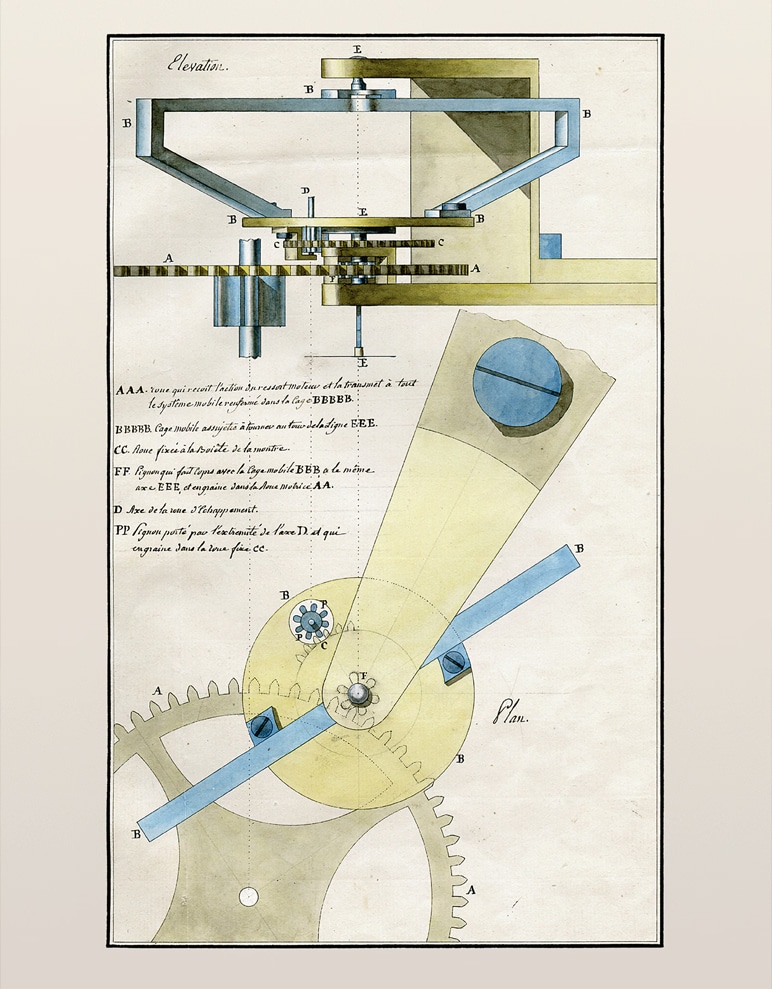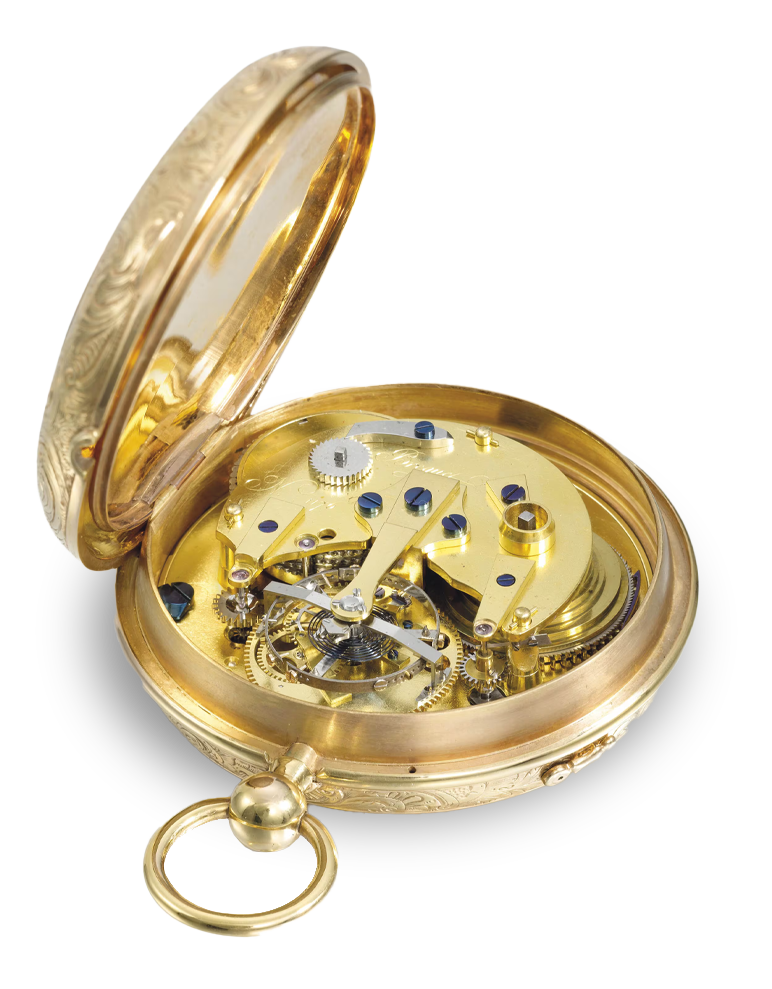Patent granted for a completely new type of regulator called the "Tourbillon"
Indissociable from its inventor's name, the Tourbillon regulator is designed to compensate for the operating errors and fluctuations caused by the effects of Earth's gravity. One of A.-L. Breguet's best-known inventions, the Tourbillon is also one of the most difficult to create. The invention consists of mounting the escapement assembly in a mobile cage that rotates on itself.
On June 26, 1801, or rather on 7 Messidor, year IX, since the Republican calendar was still in force in France, Abraham-Louis Breguet earned the rights for a patent which would last for a ten year period for a new type of regulator called the “Tourbillon”.

Abraham-Louis Breguet based his work on the observation that gravity is the enemy of the regularity of horological movements, in that it provokes variations in timing adjustment with each change of position of a watch when worn. To solve this problem of gravity that is inherent to all human activity, the maestro had the idea of installing the entire escapement (meaning the balance and spring, the lever and the escape-wheel, the parts the most sensitive to gravity) inside a mobile carriage that performs a complete rotation each minute. Thus, since all the flaws are regularly repeated, they are engaged in a process of mutual compensation. Moreover, the constant change of point of contact undergone by the balance pivots in their bearings ensures enhanced lubrication.
Even though the progress of watchmaking has made it possible to considerably improve regularity by more classic means, the Tourbillon, patented in 1801, remains a great invention, a legendary milestone in Breguet’s career. Moreover, through its discreet ties with astronomy and social sciences, it also emerged at a pivotal moment of European thought. Since then, the Breguet company has made it a point of honour to pay tribute to this invention with timepieces each more elegant than the next.
THE FIRST TOURBILLONS

Based on a principle that was brilliant and yet extremely complex to actually produce, the Tourbillon was far from operational in the summer of 1801. After two experimental models (the watch n° 169 gifted to the son of London-based horologer John Arnold in 1809, and watch N° 282 completed in 1800 and sold much later by Breguet’s son), the first Tourbillon would not be commercialized until 1805. The following year, the invention was presented to the public at the National Exhibition of Industrial Products that was held in Paris on the Esplanade des Invalides in September and October 1806. Described as a mechanism by which timepieces “maintain the same accuracy, whatever the vertical or inclined position of the watch”, the tourbillon regulator was a constant source of fascination thereafter.
The greatest devotees of horology were unable to resist its appeal: the famous patron and Italian collector Sommariva, Monsignor Belmas, Bishop of Cambrai, the Bourbons of Spain who were to own up to three Tourbillons acquired between 1808 and 1814, or the Prince-Regent of England who acquired a large-sized Tourbillon in 1814, mounted on the top of a gilt bronze cone. Somewhat mysterious and reserved for initiates, only 35 examples of the Tourbillon were sold between 1805 and 1823, the year of the maestro’s death, but his successors through to the present day have held it as their duty to perpetuate this exceptional expertise, while enriching it with fresh feats.